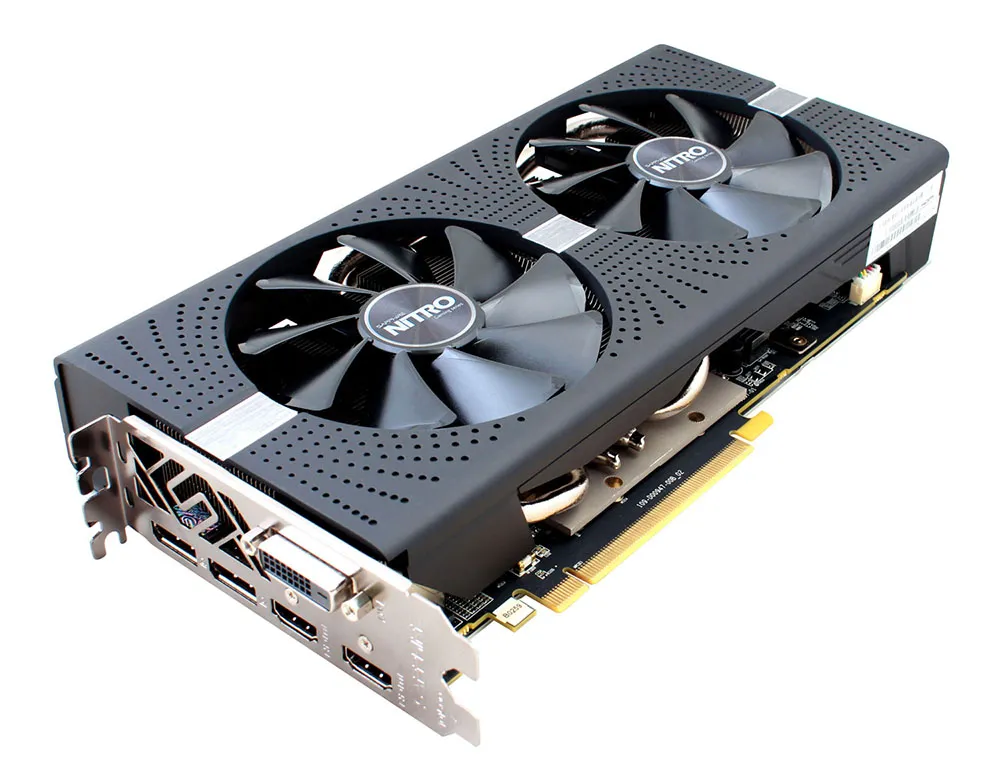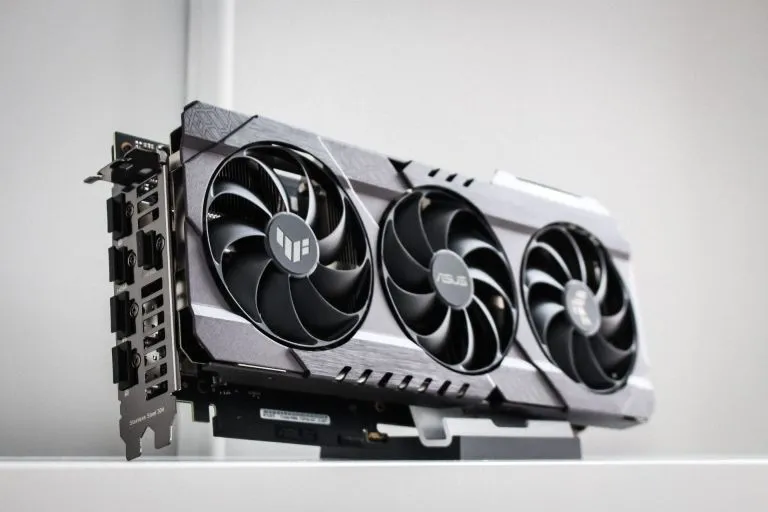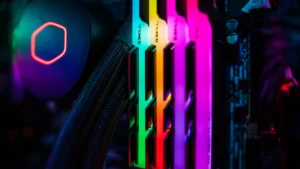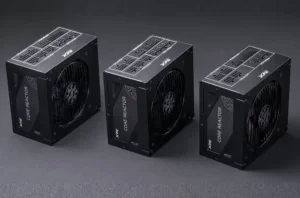Choosing a graphics card is a topic that keeps the eyes awake not only for gamers. Just think: buy a gaming card or a professional one? NVIDIA, AMD, or Intel chip? With how many VRAM? With standard clocks or in the OC version? With or without backlight? If you have a similar problem, read our guide.
At the outset, we would like to point out that it is aimed at people who are not specialists in the field of graphics cards. We know how difficult it can be to choose a GPU, given the variety of models, the amount of graphics memory, and the game techniques offered by manufacturers.
Therefore, we will introduce you to the subject of graphics cards, explaining further aspects of this very important component.
Designations for GeForce and Radeon graphics cards
Each GPU manufacturer offers several models representing different segments. How do I know which graphics card has the best and which has the lowest performance? Currently, NVIDIA and AMD offer GeForce RTX and Radeon RX chipsets that are primarily intended for gamers. The first digit in the name indicates a given generation of the RTX and RX series – the higher the newer, i.e. the RTX 3000 series is more modern and more efficient than the RTX 2000.
The highest models have an xx90 or x900 tip (eg RTX 3090 and Radeon RX 6900 XT). The higher the third (NVIDIA) or second (AMD) digit is, the better the card is, but also more expensive.
In addition, manufacturers have different versions of a given model, which are marked with the note Ti (eg RTX 3080 Ti, which is weaker than RTX 3090 but more powerful than RTX 3080) or XT (eg Radeon RX 6600 XT is stronger than RX 6600). With this knowledge, we can move on.
What graphics card? NVIDIA GeForce, AMD Radeon, or Intel ARC?
As it turns out, the choice of a graphics card from a specific manufacturer depends primarily on whether a given model meets the user’s expectations, such as, for example:
- Adequate, cost-effective performance (ensures satisfactory results in games and benchmarks).
- Stability and work culture (it is quiet, does not overheat),
- Failure-free (other users do not report recurring faults).
- Compatibility with new technologies, such as VR (offered by VR Ready cards), ray tracing or adaptive image synchronization techniques (eg FreeSync), and image reconstruction (NVIDIA DLSS, AMD FSR, Intel XeSS).
Also, don’t forget about the price, which – is although important – comes a little further if you are focused on high-end games or 4K resolution. Then you take into account the need to spend a
larger amount. However, it plays a significant role in cards intended for lower resolutions, such as 1080p. However, the most important thing in each case is the price/performance ratio, so check the results in reliable tests and reviews before buying.
It is also worth mentioning the issue of compatibility with other computer components. Well, there are no contraindications to combine Intel and AMD, AMD and NVIDIA or Intel and NVIDIA components in one set. They will neither block their performance nor even limit it. So you don’t have to narrow it down to one solution.
Variety of graphics cards
Office graphics cards – what does that mean?
By the above term, we understand graphics cards for undemanding games, amateur program operation, such as Adobe Photoshop, and for playing high-definition movies. Unlike integrated graphics chips, dedicated cards have their own memory – video memory, also known as VRAM. Its number depends on the specification of a given model.
For office and home applications, Intel and AMD integrated systems as well as Intel Irix Xe, NVIDIA GeForce GT graphics cards, and selected, less advanced NVIDIA GeForce GTX models will be sufficient. The cheapest GeForce RTX cards, AMD Radeon RX and Intel ARC cards offer the power that is suitable for more demanding applications, so buying them for the office and undemanding tasks will not necessarily be justified.
Gaming graphics cards and professional chips – what’s the difference?
There is a clear line between the three types of graphics cards that you should know if you want to avoid disappointment later. Graphics systems are divided into the following segments: office, gaming, and professional.
Gaming graphics cards – are they just for gaming?
The name of this segment can be a bit misleading because it is worth emphasizing that gaming graphics cards are suitable not only for games. Thanks to high computing power, they are also great at rendering, graphics, VR projection, and (semi) professional design.
In games, on the other hand, the role of the GPU does not end with providing specific graphics settings or maintaining a certain fps ceiling. Thanks to the gaming graphics card, you can stream the game on the network without losing power to operate the game, as well as use the advantages of a monitor with a high refresh rate (e.g. 144 Hz, 165 Hz, or even 240 Hz).
If you want a higher starting power of the GPU, invest in a graphics card described as OC, which means factory-overclocked core clocks.
For the above applications, we recommend NVIDIA GeForce RTX and AMD Radeon RX graphics cards. Also, Intel ARC, which will be released in early 2022, is to offer high performance in games (the top model may have performance comparable to the GeForce RTX 3070 and Radeon RX 6700 XT).
Professional graphics chips – who are they for?
Professional graphics cards differ from other models not so much in terms of their design as in the specificity of their work. Interestingly, despite the huge computing power, they are not an ideal choice for games. This does not mean that they are not suitable for them at all, quite the opposite. The problem is the price/performance ratio, which – in terms of games – usually leaves much to be desired.
They are brilliant at dealing with specific and complicated engineering, geological, architectural calculations, etc. They are also appreciated by people dealing with advanced three-dimensional graphics, professional photo processing, and high-definition video materials.
GPU performance – how important is graphics card performance in games?
Now that’s what all players are waiting for, i.e. how many fps in games can be provided by a given model of the graphics card. Performance is the first thing we pay attention to and it is no wonder because it is what we should be most guided by when choosing a GPU.
Remember, however, that the graphics card itself will not work wonders, because the final frame rate is affected by the entire hardware configuration, with the processor at the forefront. Always keep that in mind.
How much VRAM in GPU do you need?
VRAM is also known as Video RAM (graphics memory), which is where the graphics processor performs calculations. The choice of VRAM quantity is influenced by:
- Resolution in which you want to play or work – modern cards in most cases offer 6 GB, which is a safe value for Full HD (1080p) resolution. The higher, WQHD (1440p), may require more (at least 8 GB VRAM is the minimum), and to use the advantages of 4K it’s good to have a GPU with 10 GB of graphics memory and more.
- The level of details and additional effects. When you want to play with the highest graphics settings, choose a card with at least 8 GB of VRAM.
- Segment and types of games. E-sports games, i.e. CS: GO, LoL or Dota, are not particularly demanding and 4 GB VRAM is enough for them. Also, for example, independent productions usually have few requirements in this respect. On the other hand, titles from the AAA segment, such as Cyberpunk 2077, Deathloop, Battlefield 2042, or Watch Dogs Legion, have a large appetite for VRAM, so it’s good to buy a graphics card with at least 8 GB memory, although a model with more (10 GB or more), especially if you’re playing at higher resolutions.
In addition to the amount of VRAM, the memory bus, or the data bus, expressed in bits (the more the better) and the type of graphics memory also count. It especially affects performance at higher resolutions (above 1080p). Currently, the most popular are the GDDR6 and GDDR6X modules, which are characterized by high bone capacity. In games where large amounts of data are transferred, it is of colossal importance. GDDR6X modules are used exclusively for NVIDIA GeForce RTX 3000 (and newer) cards, while GDDR6 modules are used in systems from all manufacturers.
VRAM HBM2 (High Bandwidth Memory) was used in Radeon RX Vega or Radeon VII graphics cards, which can still be found in some computer configurations. It works at lower clock speeds, but thanks to the wider bus it offers more bandwidth, which, as we mentioned, has a significant impact on the performance in games. However, it is expensive, so manufacturers now use the aforementioned types of VRAM.
AMD Radeon RX graphics cards have a narrower data bus than the rival GeForce RTX, but it is supported by a kind of VRAM bandwidth booster – a special AMD Infinity Cache.
What else to look for when choosing a graphics card?
When deciding to buy a graphics card, consider not only the overall performance, which is, of course, the greatest importance but the supported techniques. For example, the appearance is also important, and it can translate into operation (quiet or noisy operation or low or high temperatures). What do you need to pay attention to first of all?
Ray tracing and image scaling techniques – are they important when choosing a GPU?
Compatibility with modern techniques plays a key role when choosing the right graphics card. As a player, before buying, you will consider a model that supports the latest standards, so that you can take advantage of all the novelties in the games.
After all, when you spend a few thousand on a gaming graphics card, you want it to offer visual enhancement of ray tracing games or modern image upscaling techniques that improve performance usually at a greater or lesser cost of graphics quality.
The choice is important because you do not activate the NVIDIA DLSS option on AMD cards (a closed standard that is reserved only for GeForce RTX). On the other hand, rival AMD FidelityFX Super Resolution and Intel XeSS can run on GPUs other than AMD and Intel ARC. These techniques are limited to specific titles, so check if they are in the games you are interested in (individual productions offer both DLSS and AMD FSR).
NVIDIA DLSS and Intel XeSS are AI-based upscaling techniques, unlike AMD FSR, which gives better gaming results. All of them increase performance at the greater or lesser cost of image quality.
Ray tracing (RT) only applies to GeForce RTX, Radeon RX 6000 (or newer), and Intel ARC cards. Before making a purchase decision, it is worth checking how the selected models perform in games and whether they offer satisfactory performance after activating ray-tracing graphics settings. NVIDIA has been developing its GPUs for RT longer than AMD’s and therefore GeForce’s provide better results in ray tracing computing.
It is also worth mentioning the NVIDIA Reflex technique, which reduces delays in network productions like Apex Legends, Fortnite, Valorant, or Rainbow Six: Siege. It can be activated in selected games on NVIDIA GeForce RTX 3000 or newer graphics cards.
Image Synchronization Techniques – What You Need To Know?
The graphics processor generates a certain number of frames per second (fps) during the game. However, the refresh rate of the monitor may be completely different, so in dynamic scenes, the image may be torn. To prevent this from happening, both NVIDIA and AMD have developed image synchronization techniques. They are designed to unify the number of fps with the refresh rate of the screen, ensuring a smooth image without inconvenience.
Therefore, not only ray tracing and image scaling – the purchase of this or that graphics card should also be influenced by the technique of image synchronization in the monitor. If the panel supports AMD FreeSync, it was initially necessary to choose a Radeon card. Currently, NVIDIA GeForce GTX 10xx and newer also support this solution.
Does size matter in graphics cards?
We focused on GPU techniques and performance. But that’s not all that is most important. The basis is to adjust the size of the graphics card to the computer case, namely it’s interior. Especially in the case of microATX and ITX structures, where the free space is very limited and there is no chance of installing a full-size component. Especially for such boxes, graphics card manufacturers have created miniature versions of the GPU.
Some top graphics cards with the best coolers exceed 30 cm, so they may not fit in selected cases. Keep that in mind, especially when you will be installing water colling. Always check the specifications of your housing and the planned GPU so that you do not be disappointed after purchasing the desired component.
The appearance of the GPU – with or without RGB?
The design of the graphics card, seemingly insignificant, plays an important role in the process of completing the set that will be inside the glass housing. If you want the components to be visually homogeneous, have RGB lighting, interesting decorations, and a stylish backplate, you have a wide range of products to choose from. What’s more, graphics cards can be combined with other devices with lighting.
Configuration takes place in a dedicated panel, controlled from the level of a computer interface, and more and more often also from a mobile application. The name of the panel depends on the manufacturer of the graphics card.
The graphics card should not only be efficient but also quiet and cool
By work culture, we understand the sound level of the graphics card. Not all of it, of course, but fans that spin at the top of the component. A semi-passive system is a quiet and very effective cooling system. At low load (at the beginning of work, in the early stages of the game, or in older, less demanding titles), the fans remain unaffected, and heat dissipation occurs spontaneously through the heat sink. Interestingly, GPUs with massive heat sinks can work for a long time without activating the cooling. Only when the system temperature exceeds a certain value (usually 55-60 degrees Celsius), the fans will start to force air into the heat sink fins. Graphics card control panels allow you to change the speed of fan spinning, depending on the user’s preferences.
It is worth knowing that the volume may be affected by the conditions in the housing. When the airflow in it does not flow well and it gets hot inside, modern cards will automatically increase the speed of the fans to ensure the right temperatures.
Other cooling systems are passive (used exceptionally in the cheapest, inefficient constructions, the cooling of which is solely responsible for the heat sink) and active (the fans are running all the time). Modern gaming cards in many cases have a semi-passive mode, i.e. the best possible, although it mainly concerns better quality and thus – more expensive constructions
Does the number and size of fans on the GPU matter?
Apart from the operating parameters, graphics cards also differ in the number of fans. It depends on the GPU model. Most often, graphics cards have two or three fans, but their shape, quality, and diameter are more important than the number. Three 50mm fans are not more efficient than two 100mm fans. Three 50mm fans are not more efficient than two 100mm fans.
The number of fan blades translates into the noise level of the cooling system, according to the principle – the more, the quieter (often the middle one has more blades). Their type and bearing are also of great importance. Manufacturers use proprietary solutions to improve airflow and usually the more expensive the model, the better the work culture.
The metal backplate also helps in dissipating heat, which also stiffens the entire structure, preventing the deformation of a large and heavy structure. Graphics cards keep getting bigger, thicker, and heavier. Therefore, the manufacturer adds a special stand to selected models to minimize the risk of GPU dropping or deformation. When not included, he often allows you to purchase that part.
Graphics Card Overclocking (OC)
When thinking about overclocking, look for information about fan spin direction, which you will often find in the product description. Often the center fan turns in the opposite direction for better results.
For OC, choose a high-end model that offers a more efficient cooling system. Before buying, it is worth reading the professional reviews informing, for example, about the temperatures of a given GPU design and at what fan rotational speed it reaches them (the higher, the lower the temperatures, but also louder work).
For a novice user, overclocking a graphics card can seem like an extremely difficult task. This will be the case if you decide to change the clock frequency yourself. Among other things, you need to know how many points you can safely raise megahertz for core and memory. Fortunately, the GPU manufacturers have defined the operating modes of the chipsets. You can make changes in dedicated software, for example, Eco, Gaming, or Overclocking mode. One-click is enough to increase the clock speed. Let’s add, safe growth.
There are also factory overclocked graphics cards. You will recognize them by OC marking in the name of the product. They differ from standard models in the base clock frequency. The indicators are higher at the start, which has a positive effect on performance, but you can still tweak it with special software (dedicated by the manufacturer or an application like MSI Afterburner).
Do you care about virtual reality (VR)?
When building a kit that will support games in VR mode, the main focus is on the graphics card. It is its power that defines the smoothness of the projection, and thus the comfort of entertainment in virtual reality. In order for the generated image to be in the highest possible resolution, and free from defects, streaks or lags, choose stronger models. Remember that high-resolution VR goggles require a very powerful GPU.
Graphics card ports – DisplayPort or HDMI?
Pay attention to the number and types of ports if you plan to connect more than one monitor, VR goggles, or use image synchronization technology.
The HDMI / mini HDMI port allows you to transfer high-definition images to modern panels, also supporting VR displays.
DisplayPort / mini DisplayPort is compatible with NVIDIA G-Sync and AMD FreeSync technologies and also supports high resolutions and refresh rates.
DVI and VGA are ports to which you can connect older generation monitors, but in the new GPU they are not suitable anymore. Currently, the most common connectors are DisplayPort and HDMI (the newer the card, the more often the support is of a higher standard), with the predominance of the former.
The newer standards have higher bandwidth and support a higher refresh rate at certain resolutions. For example, HDMI 1.4 allows “only” WQHD (2560 x 1440 pixels) at 75 Hz, while HDMI 2.0 is already at 144 Hz. In turn, DisplayPort 1.2 (a) provides in 4K only 75 Hz, and version 1.4 – 120 Hz.
Power consumption – what power supply for the graphics card?
Make sure that your desktop power supply has enough power and has as many power plugs as the graphics card connector requires. Generation after generation GPUs tends to have higher and higher power consumption. Manufacturers define it by the TGP (Total Graphics Power) and TBP (Total Board Power) ratios of NVIDIA and AMD, respectively. It means the total power consumption of the graphics card. The higher the GPU model, the more power it draws (and also generates more heat).
This component is extremely important, because, in the event of improper selection or insufficient power of the power supply, serious problems with the stable operation of the computer may occur. Besides, it should be adapted not only to the GPU but also to other components.
Read our article – Which computer power supply should you choose?
Recommended models of Graphic Cards
Best Gaming Graphics Cards: GeForce RTX 3080
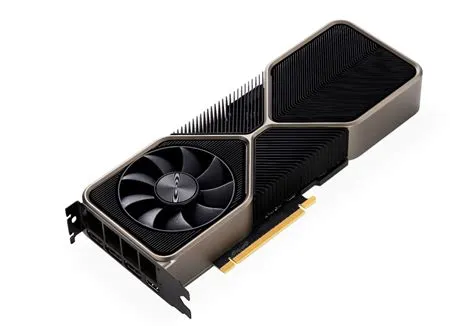

NVIDIA’s GeForce RTX 3080 uses a new and improved Ampere architecture. It is more than 30% faster than the previous generation 2080 Ti, and the price is $500 lower. Due to the significantly higher price, the new RTX 3080 Ti failed to replace the existing product. If you are serious about maximizing all graphics settings and want to play at 4K or 1440p, then this is the card you want.
Best AMD Graphics Cards for Gaming: AMD Radeon RX 6800 XT
AMD’s Radeon RX 6800 XT is the best graphics card for Team Red. Technically speaking, the speed of the RX Radeon 6900 XT has increased by about 5-7%, but the cost has increased by 54%. This is not a big problem at all, especially because you don’t get more VRAM or any other additional features. Compared with the previous generation RX 5700 XT, RX 6800 XT has a huge improvement in performance and functions. It adds support for ray tracing and has increased the speed by 70-90% in our test suite.
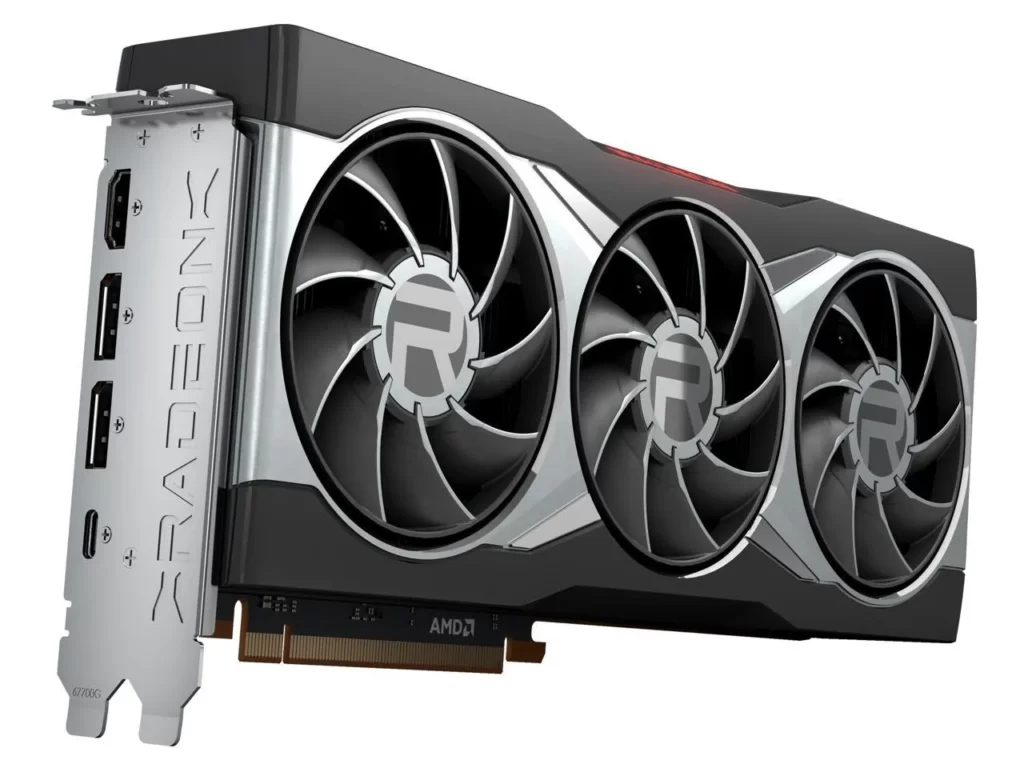

Best RTX Graphics Card for Pro Creators: GeForce RTX 3090
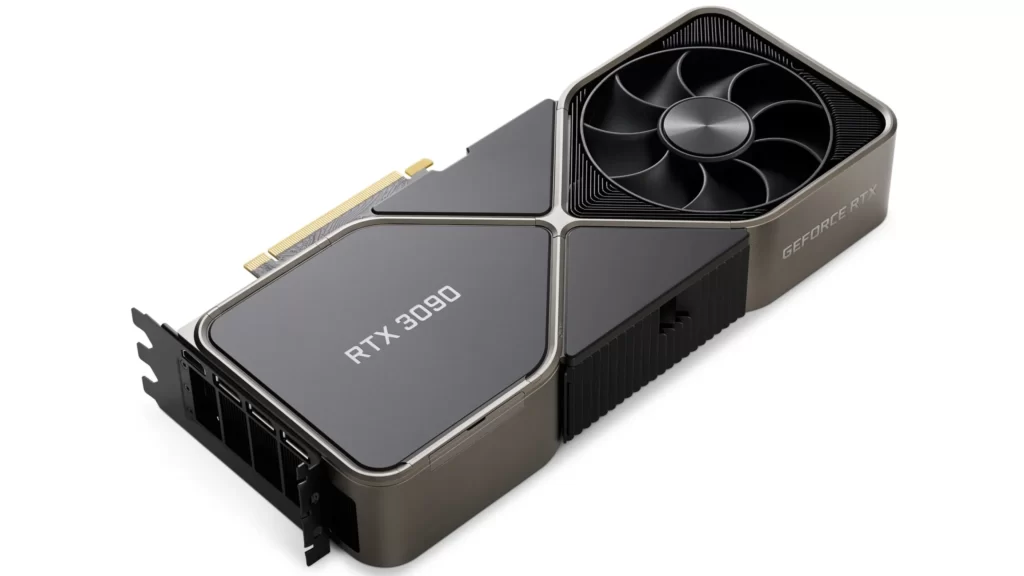

For some people, the best card is the fastest card! NVIDIA’s GeForce RTX 3090 is specifically designed for such users. The price of the RTX 3080 is more than twice that of the RTX 3080, but the performance in most workloads is only slightly better (10-15%). RTX 3090 may also become NVIDIA’s top GPU for some time.
More Affordable Gaming Graphic Card: NVIDIA GeForce RTX 3060 Ti
NVIDIA GeForce RTX 3060 Ti’s price/performance ratio will definitely threaten this statement. The 3060 Ti finally beat the previous generation 2080 Super in performance. It is also only 9% slower than 3070, but the cost is 20% lower. If you still use GTX series or similar GPUs, such as GTX 1070 or RX Vega 56, 3060 Ti can be up to twice as fast. Moreover, this includes impressive ray tracing. 1080p gaming has never been better and affordable
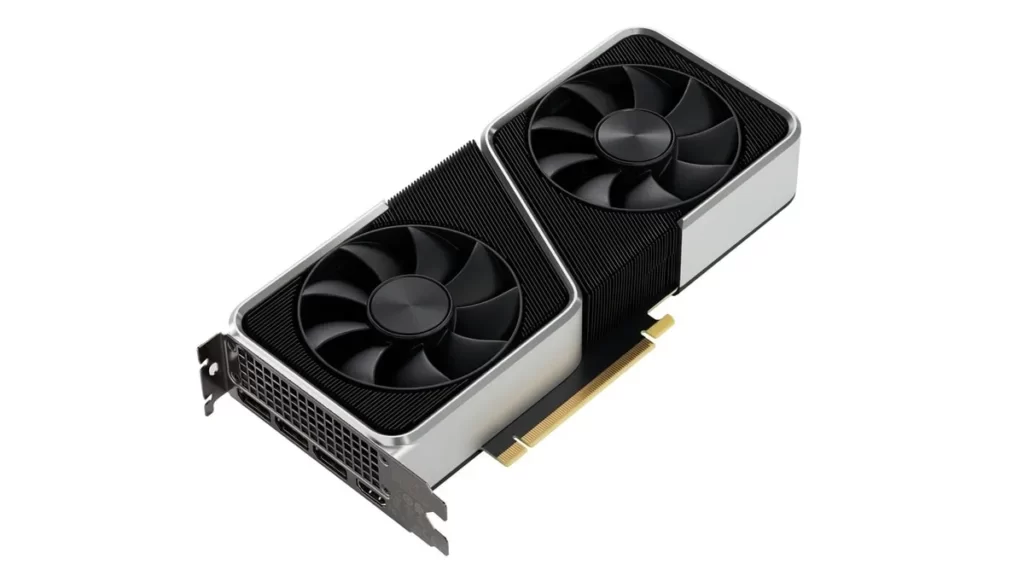

Best for Mainstream Esports: MSI GeForce GTX 1660 Super Gaming X
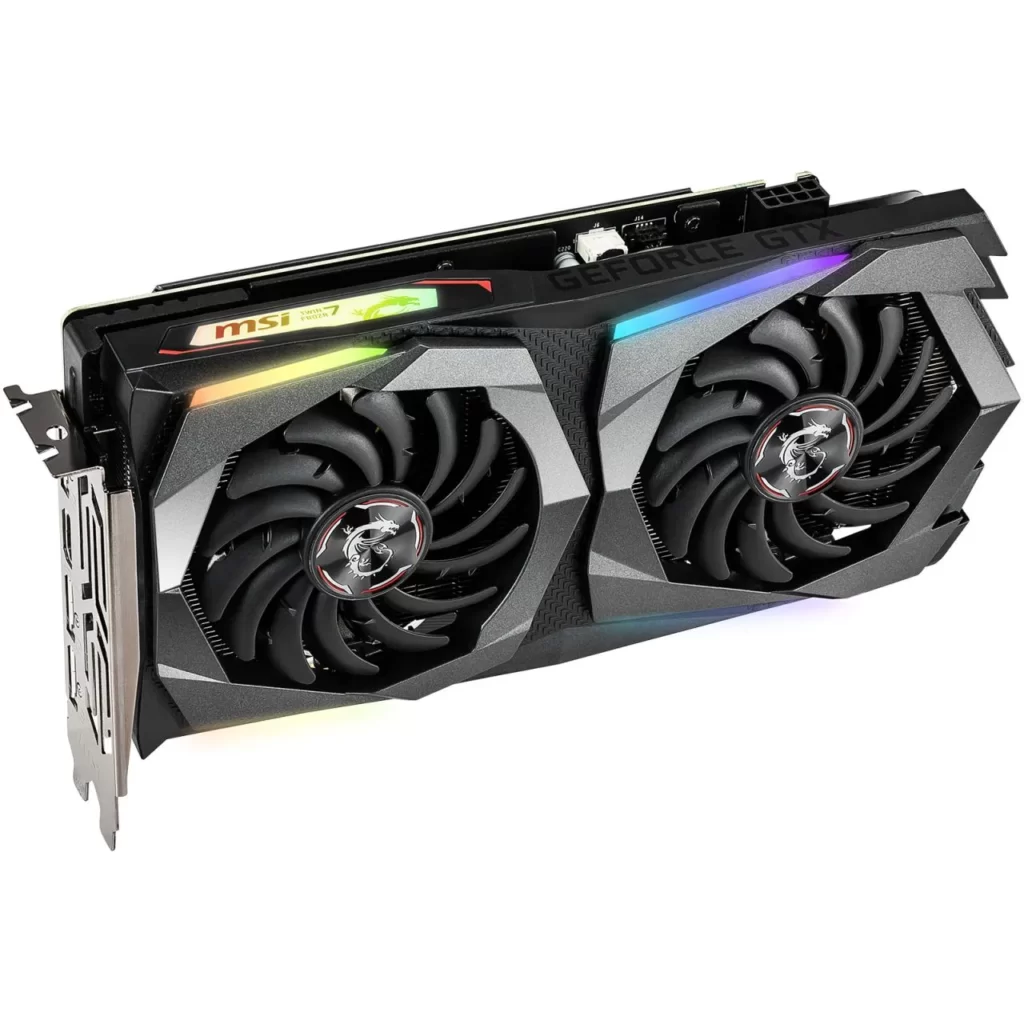

Many people would agree that MSI has done a great job in redesigning their Gaming series of graphics cards because they have faded out the red highlights and switched to a more neutral black shield and beautiful RGB lighting, which can not only handle what you may need Any color highlights. MSI’s dual TORX fan 3.0 fans do a great job of keeping the graphics card cool, and they start up very quietly-definitely one of the quietest fans in today’s graphics cards.
Best budget Graphics Card for PC Gaming: Sapphire Radeon NITRO+ RX 570 4GB
MSI GTX 1050 Ti from their Gaming X series, a product line oriented specifically towards the more demanding gamers and enthusiasts. This is a gaming GPU and there’s no hiding it – plenty of red highlights, two massive fans, and the conspicuous signature dragon logo of the MSI Gaming X series.
